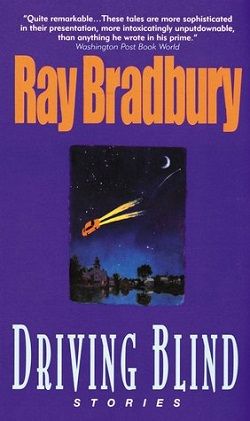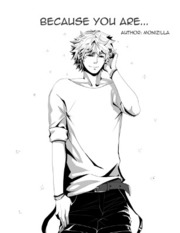Summary

Driving Blind
by Ray Bradbury
DRIVING BLIND is a stunning new collection of short fiction--the first since the publication of Bradbury's critically acclaimed Quicker Than the Eye. With a steady hand on the wheel, the master once again transports us to remarkable places-- and to warm and achingly familiar destinations of the heart, revealed as we've never seen them before in the brilliance of day or gloom of night. Here are unforgettable excursions to the fantastic, glorious grand tours through time and memory-- interspersed with strange, unexpected side trips to the disturbing and eerie--where surprises are waiting around every curve and just beyond each mile marker.
These are new roads we have never ridden before--sprawling interstates and lush, twisting rural routes fraught with dangers and delights of all manner, shape and substance. With Ray Bradbury in the driver's seat, the journey promises to be a memorable one. Come along and enjoy the ride.
.
Read
Driving Blind on http://kissnovel.net
Martial Peak Reviews
Ray Bradbury's Driving Blind is a masterful collection of short stories that showcases the author's unparalleled ability to weave together the fantastical and the deeply personal. This collection, which marks Bradbury's first since the acclaimed Quicker Than the Eye, invites readers on a journey through a landscape that is both familiar and strange, where the ordinary becomes extraordinary and the mundane is infused with a sense of wonder.
From the very first story, Bradbury's signature prose captivates the reader, drawing them into a world where imagination reigns supreme. The blurb promises "remarkable places" and "warm and achingly familiar destinations of the heart," and Bradbury delivers on this promise with a series of narratives that explore the complexities of human emotion, memory, and the passage of time. Each story serves as a unique excursion, taking readers on winding paths through the intricacies of life, love, and loss.
One of the most striking themes in Driving Blind is the exploration of memory and its impact on our present selves. Bradbury has always had a knack for capturing the essence of nostalgia, and in this collection, he delves deeper into how our past experiences shape our identities. Stories like "The Last Night of the World" evoke a sense of urgency and reflection, prompting readers to consider what truly matters in life. The characters in these tales are often confronted with their own histories, leading to poignant moments of realization that resonate long after the final page is turned.
Character development is another area where Bradbury excels. His characters are richly drawn, often embodying the complexities of human nature. In "The Ghosts of Forever," for instance, we meet a protagonist who grapples with the weight of his past decisions. Bradbury's ability to create relatable and flawed characters allows readers to connect with their journeys on a personal level. As they navigate their own "twisting rural routes," readers find themselves reflecting on their own lives, making the stories feel both intimate and universal.
Moreover, Bradbury's use of language is nothing short of poetic. His vivid descriptions and evocative imagery transport readers to the landscapes he conjures, whether they be the bustling streets of a futuristic city or the quiet solitude of a rural countryside. In "The Road to the Future," for example, the reader is enveloped in a world where time bends and reality shifts, all conveyed through Bradbury's lyrical prose. This mastery of language not only enhances the reading experience but also reinforces the emotional weight of the narratives.
Another notable aspect of Driving Blind is its exploration of the eerie and the unsettling. Bradbury has always had a penchant for the strange, and this collection is no exception. Stories like "The Night of the Hunter" introduce elements of the supernatural, blurring the lines between reality and fantasy. These unexpected side trips into the disturbing serve to heighten the overall impact of the collection, reminding readers that life is often filled with surprises, both delightful and disconcerting.
In comparing Driving Blind to other works by Bradbury, one cannot help but draw parallels to his classic The Illustrated Man. Both collections feature interconnected stories that explore the human condition through a lens of science fiction and fantasy. However, while The Illustrated Man often leans more heavily into the speculative, Driving Blind feels more grounded in emotional truth. This shift in focus allows Bradbury to delve deeper into the psychological aspects of his characters, making for a more intimate reading experience.
Ultimately, Driving Blind is a testament to Bradbury's enduring legacy as a master storyteller. His ability to blend the fantastical with the deeply personal creates a collection that is both thought-provoking and emotionally resonant. Each story serves as a reminder of the beauty and complexity of life, urging readers to embrace the journey, no matter how winding the road may be.
In conclusion, Ray Bradbury's Driving Blind is a remarkable collection that invites readers to explore the landscapes of memory, emotion, and the human experience. With its rich character development, poetic language, and a perfect balance of the eerie and the familiar, this book is a must-read for both longtime fans of Bradbury and newcomers alike. It is a journey worth taking, one that will linger in the hearts and minds of readers long after they have closed the book.
























Reviews 0
Post a Reviews: